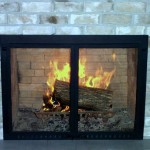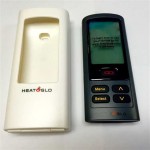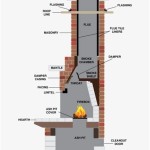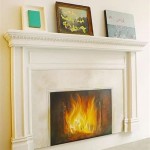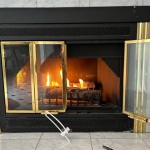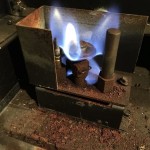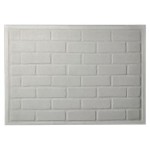Installing a Wood Burning Fireplace Insert: A Comprehensive Guide
Installing a wood-burning fireplace insert is a significant home improvement project that can dramatically increase the heating efficiency of an existing masonry fireplace. While professionally installed setups are generally recommended, understanding the process allows homeowners to be informed participants and potentially undertake portions of the work themselves, provided local codes and manufacturer instructions are strictly followed. This article provides a detailed overview of the installation process, emphasizing key considerations and precautions.
A fireplace insert is a self-contained heating appliance designed to fit inside the firebox of an existing masonry fireplace. Inserts are typically constructed of cast iron or steel and are far more efficient than open fireplaces, which often draw more heat out of a home than they provide. By creating a sealed combustion chamber and utilizing a controlled airflow system, inserts maximize heat output and minimize pollution.
Initial Assessment and Preparations
Before proceeding with the installation, a thorough assessment of the existing fireplace and chimney is crucial. This involves several key steps to ensure compatibility, safety, and compliance with local building codes.
First, the fireplace opening must be measured to ensure the chosen insert will fit comfortably. The dimensions of the firebox, including the width, height, and depth, should be carefully recorded and compared to the insert’s specifications. Adequate clearance around the insert is essential for proper airflow and to prevent overheating.
Next, the condition of the chimney needs to be evaluated. A professional chimney sweep should inspect the flue for cracks, deterioration, and excessive creosote buildup. Creosote is a highly flammable byproduct of burning wood and its accumulation can pose a significant fire hazard. The chimney must be thoroughly cleaned and, if necessary, repaired or relined. A stainless steel liner is often required for wood-burning inserts, particularly if the existing flue is damaged or of an unsuitable size. The liner should be sized according to the insert manufacturer’s specifications.
Local building codes and regulations must be consulted to determine permit requirements and any specific installation guidelines. Failure to comply with these regulations can result in fines and safety hazards. The insert itself should be EPA-certified to ensure it meets emission standards, which are designed to protect air quality.
Gathering the necessary tools and materials is the final preparatory step. This includes the insert itself, the chimney liner (if required), insulation materials, connecting pipes, fire-resistant sealant, gloves, safety glasses, and various hand tools such as screwdrivers, wrenches, and a measuring tape. Power tools like a drill and a reciprocating saw may also be needed.
Installing the Chimney Liner and Connecting the Insert
The installation of the chimney liner is a critical step that directly impacts the safety and efficiency of the insert. A properly installed liner provides a clear and unobstructed pathway for exhaust gases, preventing them from leaking into the home and reducing the risk of chimney fires.
The stainless steel liner, typically flexible, is inserted into the existing chimney flue from the top. This process usually requires two people, one to feed the liner down the chimney and the other to guide it from below. The liner should be carefully lowered until it reaches the firebox opening. Securing the liner at the top of the chimney with a top plate and storm collar prevents water from entering the chimney and causing damage.
Once the liner is in place, it needs to be connected to the insert. Most inserts have a flue collar on the top or back that connects directly to the liner. A short section of stovepipe may be required to bridge the gap between the insert and the liner. The connection should be sealed tightly with fire-resistant sealant to prevent leaks. It’s essential to ensure that the liner extends far enough into the firebox to allow for a secure and sealed connection.
With the liner and insert connected, the insert can be carefully positioned inside the firebox. Depending on the size and weight of the insert, assistance may be required. The insert should be centered in the opening and placed on a solid, level surface. Some inserts may require additional support, such as fire bricks, to achieve the correct height and stability.
Any gaps between the insert and the fireplace opening should be filled with insulation material, such as mineral wool or fiberglass insulation. This helps to prevent heat loss and improves the overall efficiency of the insert. The insulation should be carefully packed around the insert, ensuring that it completely fills the space without compressing the insert itself. Some installers use a metal surround or trim kit to create a finished look and further seal the opening.
Final Steps and Safety Checks
After the insert is installed and insulated, several final steps are necessary to ensure its safe and proper operation. These include inspecting the connections, conducting a test burn, and educating the homeowner on safe operating procedures.
A thorough visual inspection of all connections, including the liner-to-insert connection and any stovepipe sections, is essential. Check for any signs of gaps, leaks, or loose fittings. All connections should be sealed with fire-resistant sealant and tightened securely. Verify that the chimney liner is properly secured at the top of the chimney and that the storm collar is in place.
Before using the insert for regular heating, a test burn should be conducted. This involves lighting a small fire in the insert and observing its performance. Check for proper draft, which indicates that the exhaust gases are being effectively drawn up the chimney. Monitor the temperature of the insert and the surrounding area, ensuring that it does not overheat. Look for any signs of smoke or fumes escaping into the home. If any issues are detected, the insert should be inspected and repaired before further use.
Educating the homeowner on safe operating procedures is crucial for preventing accidents and ensuring the longevity of the insert. This includes instructions on how to properly load and light the fire, how to control the airflow, and how to clean the insert and chimney. The homeowner should be aware of the dangers of overfiring the insert, which can damage the appliance and increase the risk of a chimney fire. Regular chimney inspections and cleanings are essential for maintaining the safety and efficiency of the insert. Provide the homeowner with the manufacturer’s instructions and warranty information. It is important to emphasize the importance of using seasoned firewood, as green wood produces more smoke and creosote.
Carbon monoxide detectors should be installed in the home, particularly near sleeping areas, to provide an early warning in case of a carbon monoxide leak. Carbon monoxide is a colorless, odorless gas that can be deadly. Check the batteries in the detectors regularly and replace them as needed.
Finally, be aware that the installation process described above is a general guideline and specific instructions may vary depending on the make and model of the insert. Always refer to the manufacturer's instructions for detailed guidance. Professional installation is strongly recommended to ensure the safety and efficiency of the wood-burning fireplace insert. If you are not comfortable performing any of these steps, consult with a qualified professional.
Wood Stoves And Fireplaces How To Install A Burning Fireplace Insert Hearth Com Forums Home

How To Install A Fireplace Insert Diy Save Money

Custom Installation Of Fireplace Inserts Insert Installations Sierra Hearth And Home

Wood Fireplace Insert Installation Overview By Rockford Chimney Supply

Fireplace Insert Installation Wood Inserts Gas Pellet And Electric

Lodi Wi Installing Fireplace Insert Remodel

Wood Fireplace S Installation Chimney Sweeps Of America

Best Fireplace Insert Repair Installs Ton Service

Wood Burning Fireplace Insert Frederick Md Repair Install

Wood Burning Fireplace Inserts Insert Installation
Related Posts

